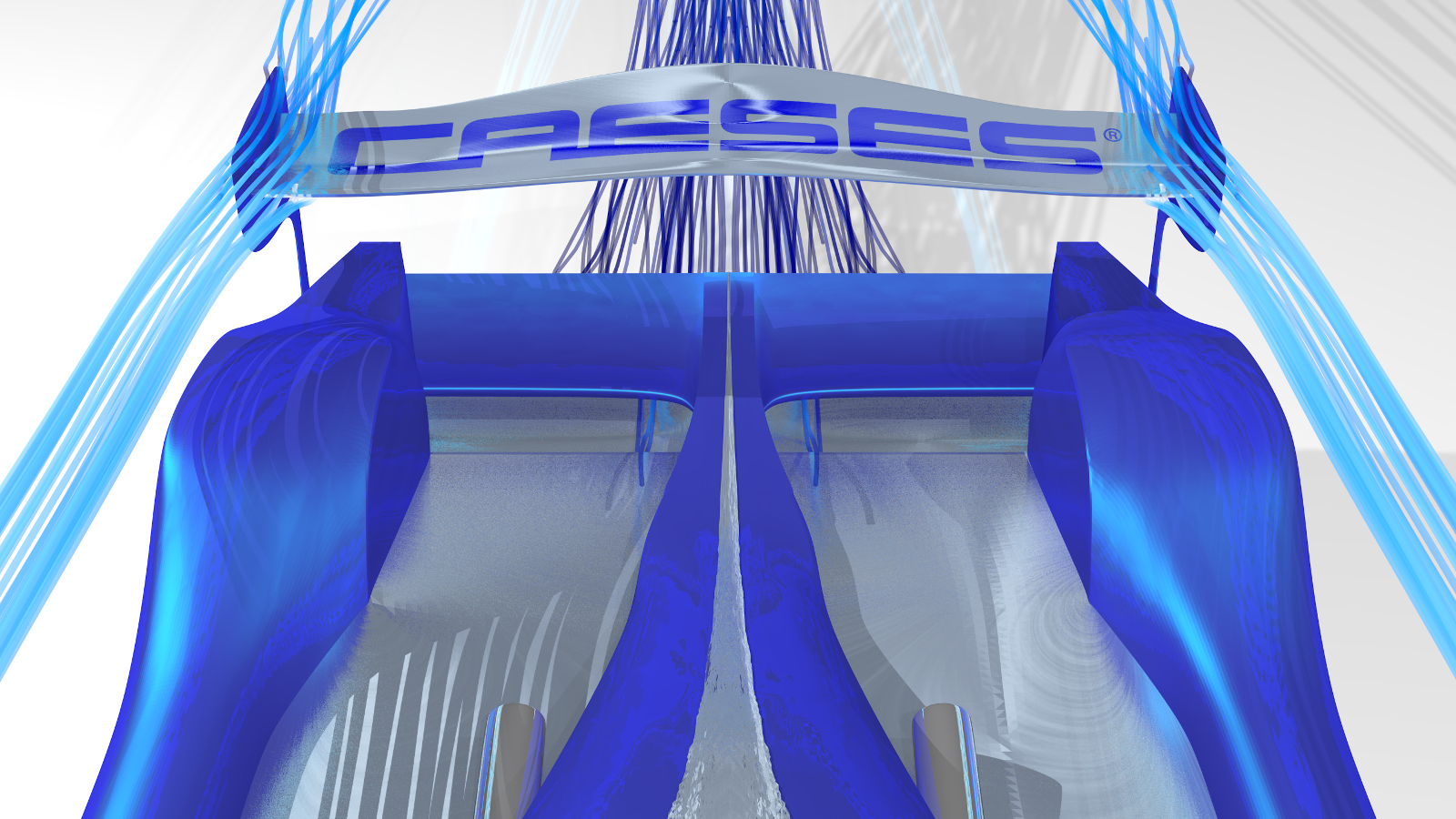 MantiumRAY the virtual racing team of MantiumCAE has won the last 2015 KVRC race. This was mainly achieved with considerable use of CAESES.
MantiumRAY the virtual racing team of MantiumCAE has won the last 2015 KVRC race. This was mainly achieved with considerable use of CAESES.
As written in an earlier post, CAESES was used to create a new rear wing to improve overall aerodynamic efficiency. Now some colorful post-processing images are available:
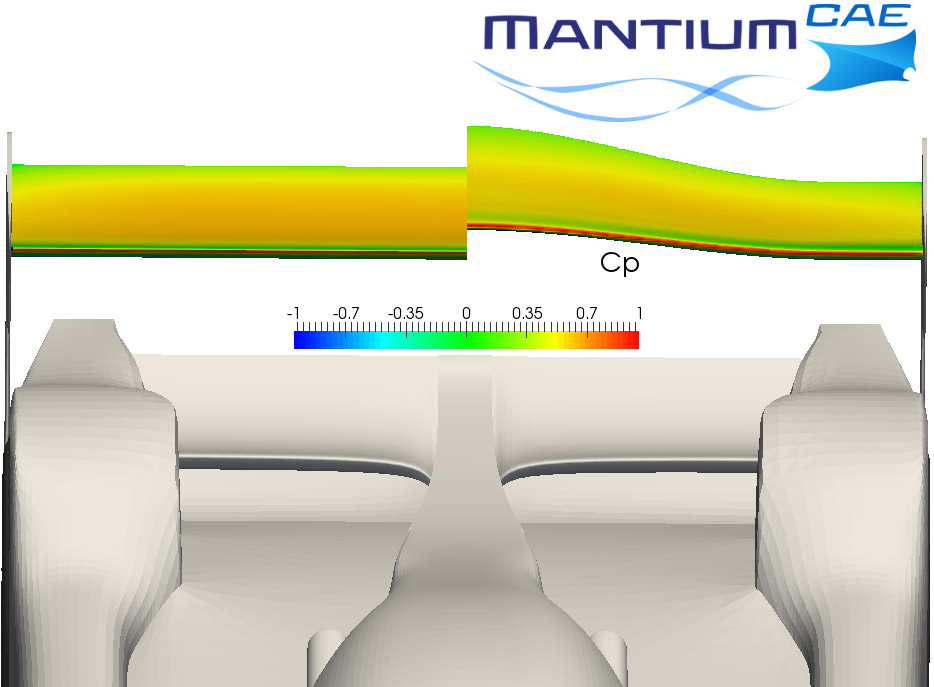
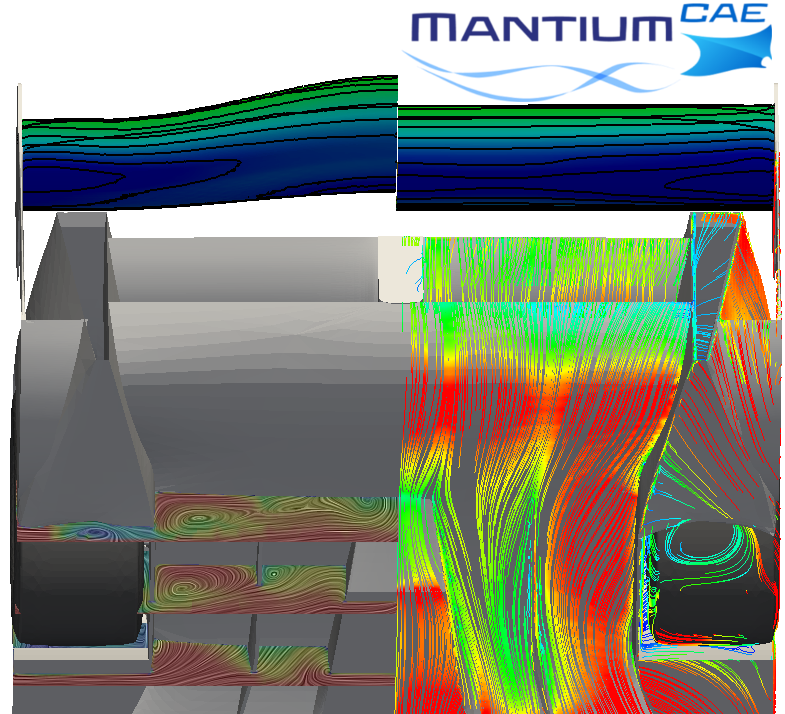
Just looking at pressure distributions or statistical data from the optimization does not help to understand why this new wing is so much better compared to the old straight wing. Looking at the lift distribution of the two wings reveals more:

While the lift for the straight wing is almost equally distributed along the wing span with a bit increase at the ends, the curved wing has its lift maximum at the wing center. This is a nice example of how optimization techniques can help to develop new knowledge. In this case the resulting lift distribution might not be very surprising, esp. for an air craft engineer. It should be kept in mind that the optimization algorithm did not “know” anything about lift distributions but came up with something very plausible. Hard numbers also confirm the improved performance. The lift to drag ratio is increased by 27% compared to the already very good straight wing.
A 27% increase in aerodynamic efficiency is very good for such an important part of the car. The other two most important parts are the front wing and the diffuser. The air flow and pressure distribution under the car can be seen in the following slice taken 0.5m off of the vehicle center:
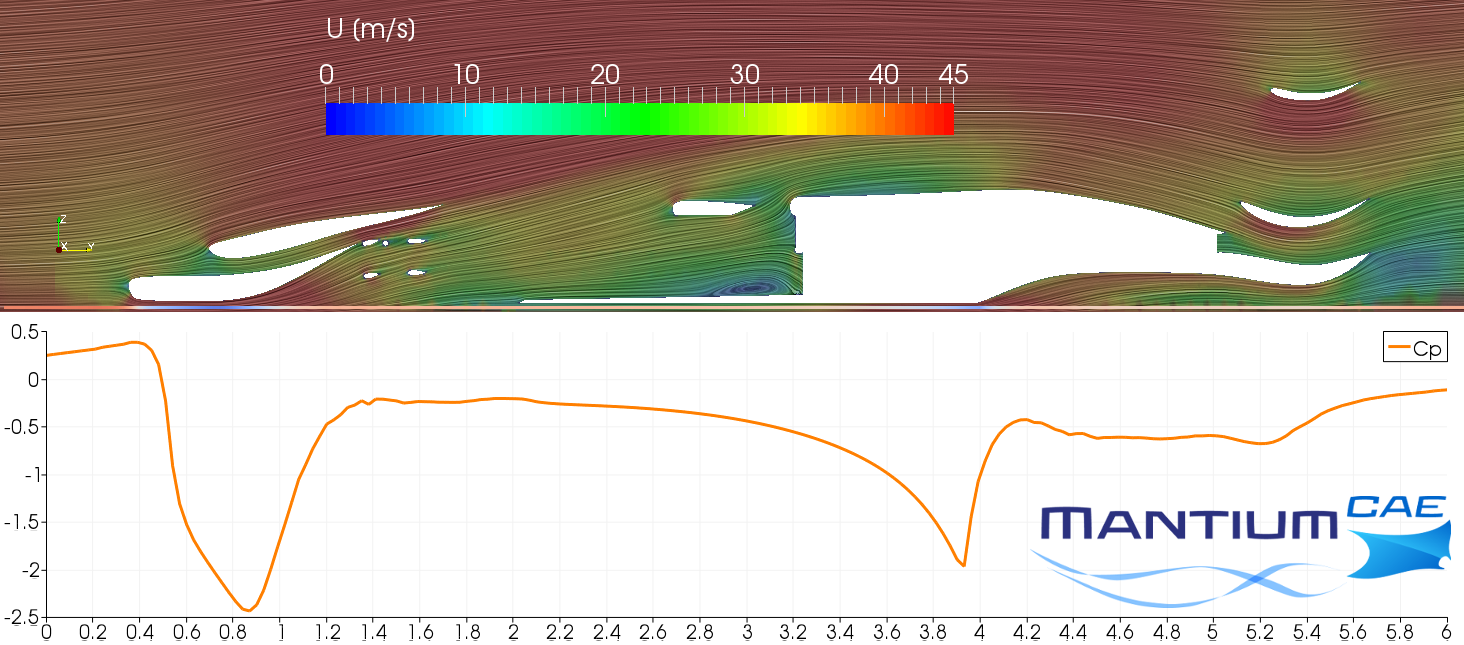
The image shows two things. There are still a lot of parts that can be improved. The upper side impact structure could be covered much smarter. And the recirculation zone right under it does not look to nice either.
The pressure distribution might help to explain the strange diffuser shape. The shape was already a result from an earlier optimization and was created once more for this race. Looking at the pressure distribution it seems that the downward bump at the end somehow helps the create a zone of slightly reduced pressure ahead of it. Further investigations are necessary and will be done in the future.
Apart from that it can be seen that the front wing creates a lot of downforce although it was even raised a bit to help balance the car.
All this results in a victory with a nice gap to the second car:

Establishing a good process using geometry parametrization, coupling it with a CFD software and running optimizations is never an easy process. It requires experience, time and a lot of patience. It took some races for MantiumCAE to successfully implement it for the challenge. Next year everything will be ready and MantiumRAY should be in a good position to continue winning races.
Hopefully this article helps and gives some insight into how a car for the competition can be developed and helps to understand what can be done with CFD. Even more help is given by one of the competitors, CAEdevice from Italy. Their car can be downloaded here. This should be a very good starting point for anyone who wants to join this fantastic challenge.
Below are two images of the final car with some stream lines:
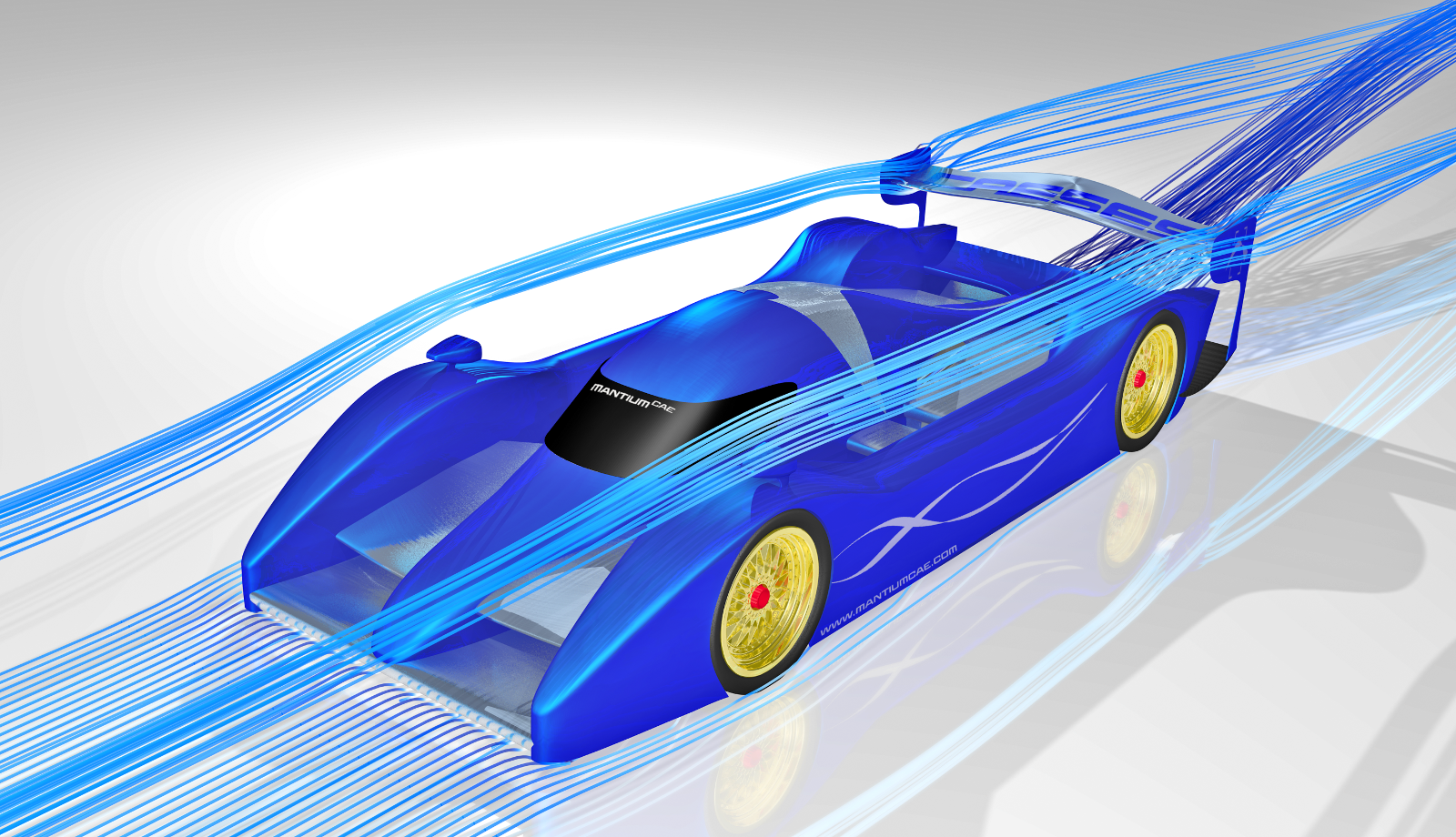
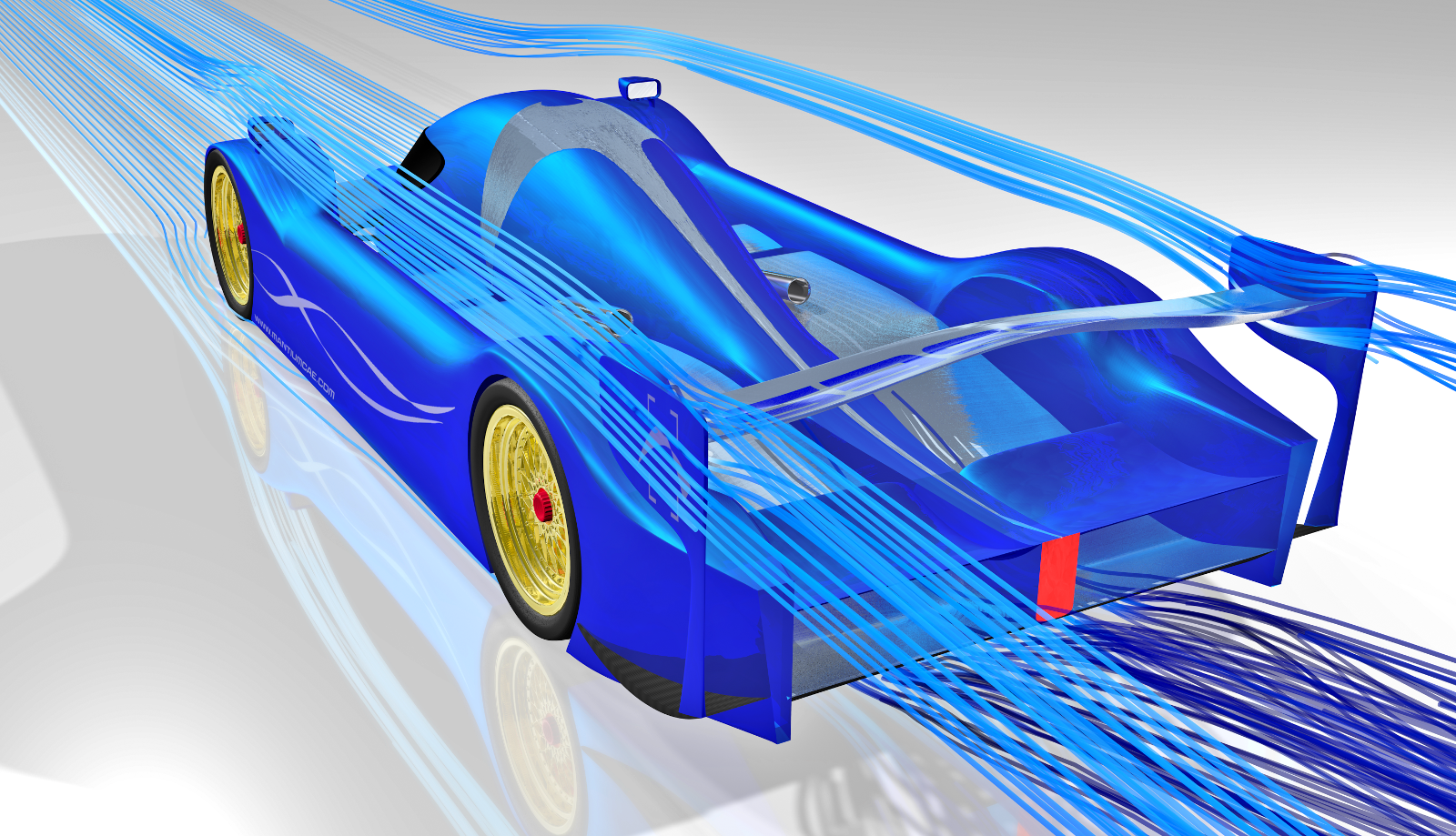
The car still has a lot of space available for sponsors. Esp. decals of HPC providers should look very good.